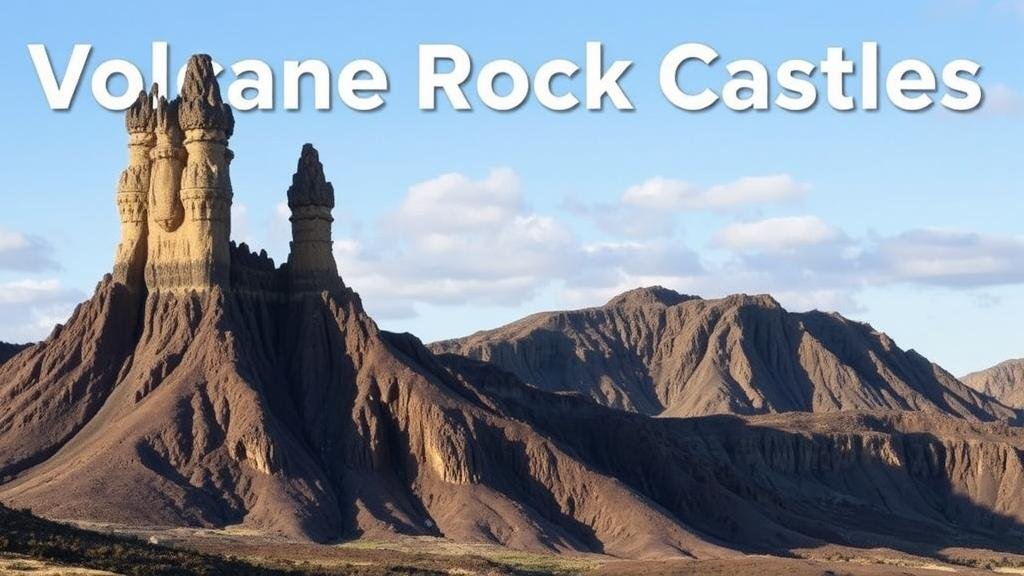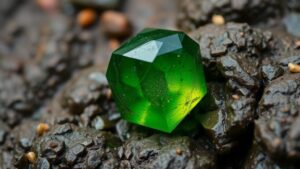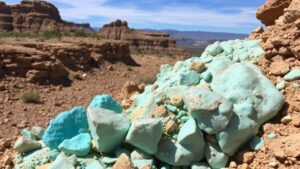Volcanic Rock Castles: The Mystery of Pumice and Perlite Formations
Volcanic Rock Castles: The Mystery of Pumice and Perlite Formations
For rockhounds and mineral collectors, the allure of volcanic rock formations brings with it a sense of adventure and discovery. Among these formations, pumice and perlite occupy a unique niche, both being lightweight and porous volcanic rocks that exhibit fascinating characteristics. This article delves into the origins, composition, and practical applications of these intriguing materials, providing insight for collectors and enthusiasts alike.
Understanding Pumice and Perlite
Pumice and perlite are both products of volcanic eruptions, formed when magma cools and depressurizes. While they share similarities, their differences in texture, composition, and usage set them apart. Understanding these elements is critical for collectors aiming to distinguish between the two.
- Pumice: This volcanic rock is often characterized by its light gray to beige color and is filled with many small gas bubbles. This porous texture gives pumice its lightweight nature, allowing it to float on water. Typically formed during explosive eruptions, it has an average density of about 0.6 to 1.0 g/cm³.
- Perlite: Formed when volcanic glass is rapidly cooled and hydrated, perlite has a smoother texture and a higher silica content (around 70-75%). When heated, perlite expands significantly (up to 20 times its original volume) due to the water content, which makes it useful in various industrial applications. Its density ranges from 0.1 to 0.6 g/cm³, making it even lighter than pumice.
The Geological Formation of Pumice and Perlite
The formation processes of pumice and perlite are intimately tied to volcanic activity. Pumice is birthed under extreme pressure conditions during explosive eruptions, where gas expands within the lava and creates its distinctive bubble-laden structure. For example, the eruption of Mount St. Helens in 1980 produced significant amounts of pumice, which serves as a prime collecting location. In contrast, perlite forms from the rapid cooling of lava that is rich in silica. A typical expanding temperature is between 760°C to 1,370°C (1,400°F to 2,500°F), resulting in the formation of the lightweight material that is then mined and processed for commercial use.
Collecting Pumice and Perlite
For avid collectors, both pumice and perlite can be intriguing additions due to their varied shapes and textures. Here are practical tips for finding and collecting these volcanic rocks:
- Research: Understand the geological history of your area; regions with past volcanic activity are prime spots for finding both pumice and perlite.
- Visual Identification: Look for the characteristic lightness of pumice and the glassy finish of perlite. Pumice will usually be rougher, while perlite has a smoother texture.
- Safety First: Always wear gloves and protective eyewear when collecting volcanic rocks to minimize the risk of injury.
- Field Guides: Consider investing in a comprehensive field guide on volcanic rocks which can help to accurately identify specimens.
Applications of Pumice and Perlite
The unique properties of pumice and perlite extend beyond mere aesthetic appeal; they possess practical applications that make them valuable resources in various industries:
- Horticulture: Both pumice and perlite are excellent soil amendments. They improve aeration, drainage, and moisture retention in potting mixes, making them essential for healthy plant growth.
- Construction: Pumice can serve as a lightweight aggregate in construction materials, while perlite is often used as a thermal insulating material.
- Filtration: The porous nature of pumice makes it an effective filtration medium in water treatment processes.
Conclusion: Embracing the Mystery
Volcanic rock castles formed by pumice and perlite present a compelling opportunity for rockhounds and mineral collectors looking to expand their collections. Understanding their geological origins, characteristics, and applications can significantly enhance your collecting experience. By applying the practical tips mentioned above, you can begin your journey into the fascinating world of these volcanic treasures.
As you explore new locales and enrich your collection, remember that both pumice and perlite are not just interesting geological specimens; they are testimonies of Earth’s dynamic processes, waiting to reveal their stories to those who look closely.


